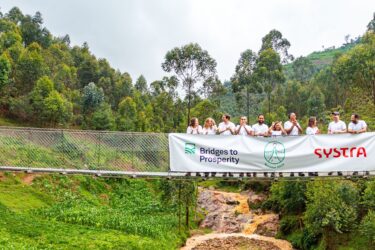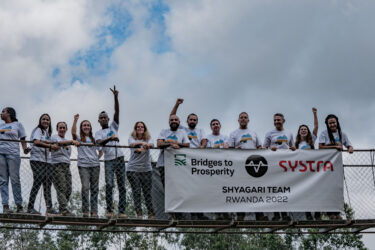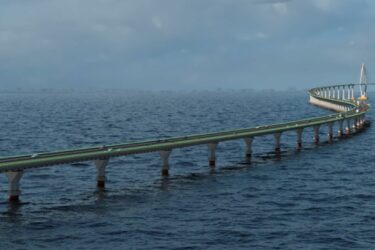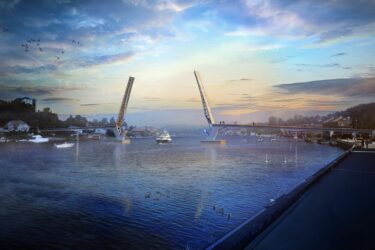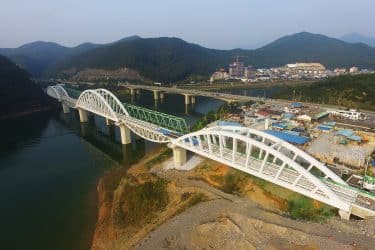The Samuel-De Champlain Bridge spans the St. Lawrence River from Nuns’ Island to Brossard, downstream of the original Champlain Bridge. This 34km long bridge, a major achievement for SYSTRA, has won a series of prestigious awards since its inauguration in June 2019.
The challenge
The Samuel De Champlain Bridge spans the St. Lawrence River from Île-des-Sœurs to Brossard downstream from the original Champlain Bridge. The 34km long bridge consists of three independent structures—one for northbound traffic, one for southbound traffic, and one for a transit corridor.
The bridge
The typical 50.255m wide deck constructed by two 5-meter gaps between deck structures allows for 6 lanes of traffic, 2 lanes of a transit corridor, and a multiple-use-path. Each roadway deck consists of a constant depth, composite twin steel box girder with a precast concrete deck.
The 240m cable supported main span crosses the St. Lawrence Seaway with a vertical clearance of 38.5m above high water level. The three individual structures are connected by steel cross beams over the length of the main spans. The superstructure is supported by two planes of stay cables anchored in a twin leg pylon straddling the transit corridor.
The lower pylon is made of precast, match-cast concrete segments, while the upper pylon is cast-in-place. The back span for the cable-stayed bridge was erected on falsework, and the main span was erected segmentally in one direction with a lifting system on the deck. The pylons and piers for the cable-stayed structure are supported on piles socketed into the rock.
The approach spans are continuous with four to seven spans per unit. The typical approach span length is 80.4m. A 109m span is required for crossing Route 132 at the east end of the bridge. The approach span is supported on unique piers with twin inclined legs. The pier legs are made of precast, match-cast concrete segments that are connected with posttensioning tendons to a steel pier cap.
The piers are are generally supported on precast concrete spread footings keyed into the rock. The approach spans are erected with floating cranes. The steel girders are spliced to limit the maximum lifting weight at 85t.
An award-winning project
Since its inauguration in June 2019 the Samuel-De Champlain Bridge has won a string of prestigious awards.
In 2022, the International Road Federation (IRF Global), an NGO founded in 1948 in Washington to promote the development of road networks, awarded the bridge the Achievement Award in the Quality Management category.
In 2020 the bridge was awarde the top prize at the 52nd annual Canadian Consulting Engineering Awards, the Schreyer Award, announced in a virtual ceremony beamed from the Canadian capital Ottawa on October 29th of that year. The award was given to SYSTRA Design Joint Venture partner SNC-Lavalin on behalf of the bridge’s operator, Signature on the Saint Lawrence (SSL).
In the same year, the bridge was awarded by IABSE and by ACEC California and won the International Transportation Structure Award from the Precast/Prestressed Concrete Institute (PCI).
In 2018, before the bridge’s completion, the New Champlain Bridge Corridor Project earned an Envision Platinum Award from the Institute for Sustainable Infrastructure (ISI) for achieving the highest standards of sustainable development and environmental performance on an infrastructure project. These ratings are given to infrastructure projects such as roads, bridges and transportation stations that excel in sustainable development and environmental performance at every stage of the project, from design to construction, through to implementation.
project key figures
- Total length: 34,000m
- Length of main cable-stayed span: 240m
- Pylon height: 170m
- Width: 50,255m
- 3 separate decks
- 6 traffic lanes plus 2 lanes of transit corridor, multi-use-path
- 11 million public transport users
- More than 50 million vehicles expected per year
- Over 9,000 segments of concrete deck slab
- 74 piers of which 42 double piers
- 37 pier caps
- 600 box-girders
- More than 1 million bolts
- Up to 1,600 workers on the site
- 8.4 million hours of work
- 4 years of work by SYSTRA
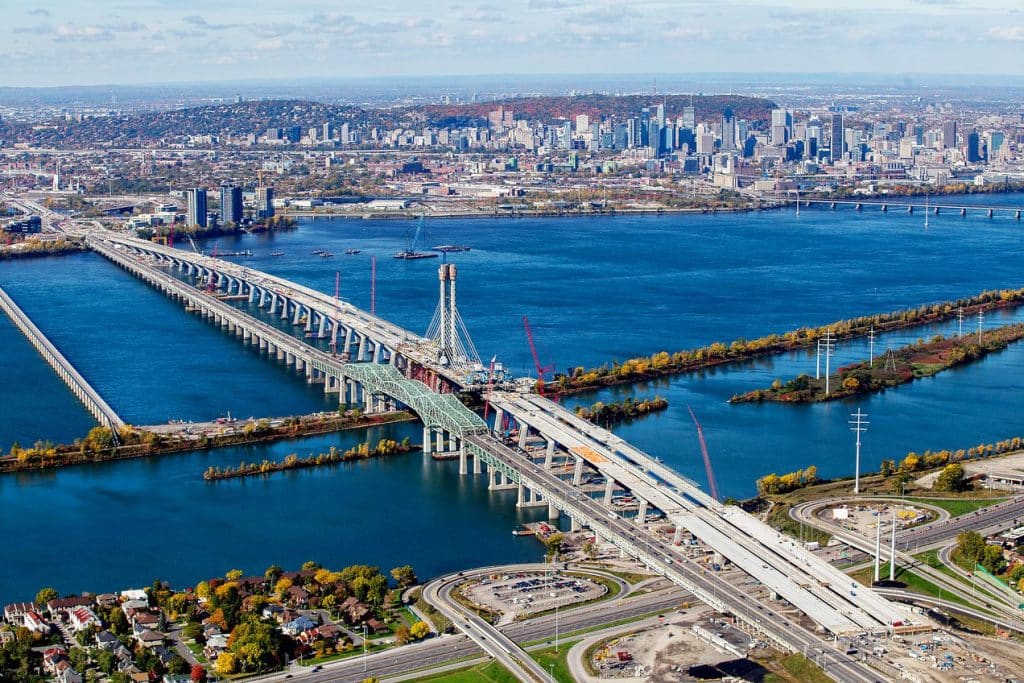
 Australia
Australia  Brazil
Brazil  Canada
Canada  China
China  Denmark
Denmark  France
France  India
India  Indonesia
Indonesia  Ireland
Ireland  Italy
Italy  Malaysia
Malaysia  New Zealand
New Zealand  Norway
Norway  Poland
Poland  Saudi Arabia
Saudi Arabia  Singapore
Singapore  South Korea
South Korea  Sweden
Sweden  Taiwan
Taiwan  Thailand
Thailand  United Kingdom
United Kingdom  United States
United States  Vietnam
Vietnam 